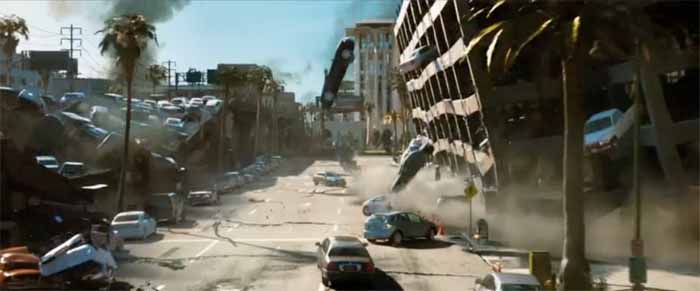1. Mayan Calendar
The first mob to predict 2012 as the end of the world were the Mayans, a bloodthirsty race that were good at two things:
Building highly accurate astrological equipment out of stone and Sacrificing Virgins.
Thousands of years ago they managed to calculate the length of the lunar moon as 329.53020 days, only 34 seconds out. The Mayan calendar predicts that the Earth will end on December 21, 2012. Given that they were pretty close to the mark with the lunar cycle, it's likely they've got the end of the world right as well.  2. Sun Storms Solar experts from around the world monitoring the sun have made a startling discovery: our sun is in a bit of strife. The energy output of the sun is, like most things in nature, cyclic, and it's supposed to be in the middle of a period of relative stability. However, recent solar storms have been bombarding the Earth with so much radiation energy, it's been knocking out power grids and destroying satellites. This activity is predicted to get worse, and calculations suggest it'll reach its deadly peak sometime in 2012 3. The Atom Smasher |
If having scientists warning us about the end of the world isn't bad enough,religious folks are getting in on the act aswell. Interpretations of the Christian Bible reveal that the date for Armageddon, the final battle between Good an Evil, has been set down for 2012. The I Ching, also known as the Chinese book of Changes, says the same thing, as do various sections of the Hindu teachings.
5. Super Volcano
Yellowstone National Park in the United States is famous for its thermal springs and Old Faithful geyser. The reason for this is simple - it's sitting on top of the world's biggest volcano, and geological experts are beginning to get nervous sweats. The Yellowstone volcano has a pattern of erupting every 650,000 years or so, and we're many years overdue for an explosion that will fill the atmosphere with ash, blocking the sun and plunging the Earth into a frozen winter that could last up to 15,000 years. The pressure under the Yellowstone is building steadily, and geologists have set 2012 as a likely date for the big bang.
6. The Physicists
This one's case of bog-simple maths mathematics. Physicists at Berekely Uni have been crunching the numbers. and they've determined that the Earth is well overdue for a major catastrophic event. Even worse, they're claiming their calculations prove, that we're all going to die, very soon - while also saying their prediction comes with a certainty of 99 percent- and 2012 just happens to be the best guess as to when it occurs.
7. Slip-Slop-Slap-BANG!
We all know the Earth is surrounded by a magnetic field that sheilds us from most of the sun's radiation. What you might not know is that the magnetic poles we call north and south have a nasty habit of swapping places every 750,000 years or so - and right now we're about 30,000 years overdue. Scientists have noted that the poles are drifting apart roughly 20-30kms each year, much faster than ever before, which points to a pole-shift being right around the corner. While the pole shift is underway, the magnetic field is disrupted and will eventually disappear, sometimes for up to 100 years. The result is enough UV outdoors to crisp your skin in seconds, killing everything it touches.
The Maya Calendar was the center of Maya life and their greatest cultural achievement. The Maya Calendar's ancestral knowledge guided the Maya's existence from the moment of their birth and there was little that escaped its influence. The Maya Calendar made by the Maya World Studies Center in Merida, Yucatan, Mexico follows a centuries old tradition.
This Maya Calendar website is developing with the intent of providing a complete view of Maya culture; being that the Maya world was centered on the calendar, this name is more than appropriate for the Maya World Studies Center website.
The Maya are probably the best-known of the classical civilizations of Mesoamerica. Mayan history starts in the Yucatan around 2600 B.C., Mayan history rose to prominence around A.D. 250 in present-day southern Mexico, Guatemala, western Honduras, El Salvador, and northern Belize.
Building on the inherited inventions and ideas of earlier civilizations such as the Olmec, the Maya developed astronomy, calendrical systems and hieroglyphic writing. The Maya were noted as well for elaborate and highly decorated ceremonial architecture, including temple-pyramids, palaces and observatories, all built without metal tools. Mayan history shows that they were also skilled farmers, clearing large sections of tropical rain forest and, where groundwater was scarce, building sizeable underground reservoirs for the storage of rainwater. The Maya were equally skilled as weavers and potters, and cleared routes through jungles and swamps to foster extensive trade networks with distant peoples.
Many people believe that the ancestors of the Maya crossed the Bering Strait at least 20,000 years ago. They were nomadic hunter-gatherers. Evidence of settled habitation in Mexico is found in the Archaic period 5000-1500 BC - corn cultivation, basic pottery and stone tools.
The first true civilization was established with the rise of the Olmecs in the Pre-Classic period 1500 BC -300 AD. The Olmecs settled on the Gulf Coast, and little is known about them.





No comments:
Post a Comment